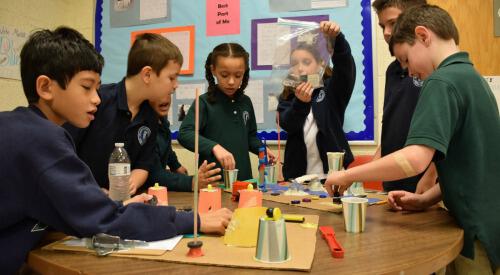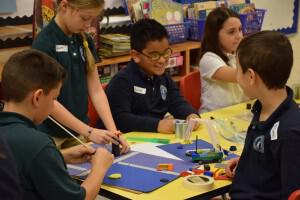 |
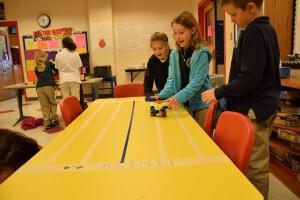 |
“Magnet Land” and “Roller Coaster Challenge”
Following the great success of their first STEM collaboration, “Shelter Challenge” (see the “Shelter Challenge” news story and photo gallery HERE!) Doane Stuart’s third and fourth grade students recently completed two additional STEM projects with the help of Mrs. Tami Schillinger (Olana Schillinger ’23) and Ms. Jennifer Hess (Ana Van Plew ’24and Nick Van Plew ’21).
In November the students completed the “Magnetic Challenge.” They were asked to take on the role of a Civil Engineer, Activity Director, Magnetic Artist and Mechanic while designing a make-believe city made of magnets and magnetic reactions. The “mayor” then asked the group of engineers, designers and builders to design and construct a prototype of “Magnet Land,” Albany’s newest attraction! It was required that each prototype include land-forms, a magnetic form of transportation, a magnetic sculpture (3-5 inches tall), a magnetic game or activity and one levitating magnet.
The students joined together once a week to work on the projects, and after days of work and experimenting with different types of magnets, metals and building materials, the groups presented their models to a construction engineer to be inspected and evaluated.
“Magnetic Challenge” Photo Gallery
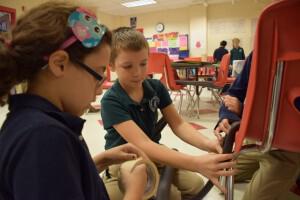 |
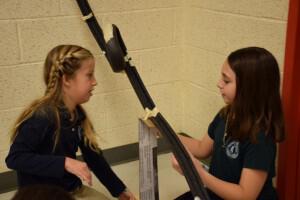 |
In December, the students embarked on their next STEM project, the “Roller Coaster Design Challenge,” a fun introduction to the world of friction. The roller coaster, built with foam tubing, was required to have at least one loop and a “sideways twister.” In order for a group to have a successful run, a marble needed stay on the roller coaster track and land in a cup at the end.
Through much trial and error students learned about the relationship between mass and force, and how changing aspects of their design would affect the speed and accuracy of their roller coaster. The students also became familiar with key physics concepts such as velocity and acceleration.
“Roller Coaster Design Challenge” Photo Gallery
STEM education is an interdisciplinary approach to learning that removes the traditional barriers separating the four disciplines of science, technology, engineering and mathematics, and integrates them into real-world rigorous and relevant learning experiences for students. The engineering process is accomplished through Project Based Learning (PBL). Students go through an extended process of inquiry in response to a complex question, problem, or challenge. Rigorous projects help students learn key academic content and practice 21st Century Skills, such as collaboration, communication & critical thinking.

